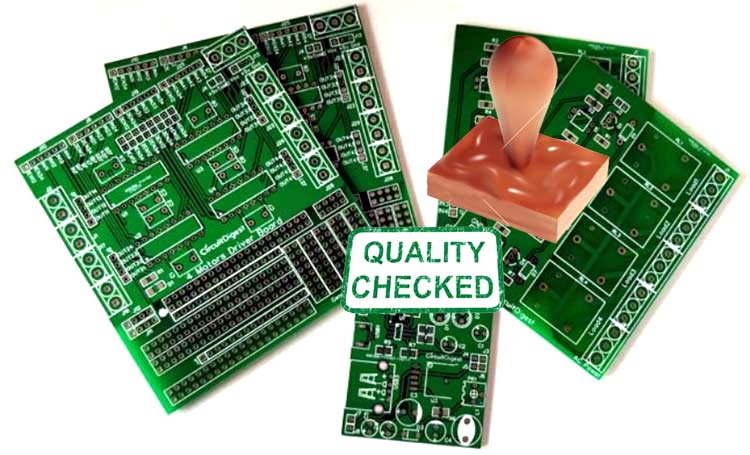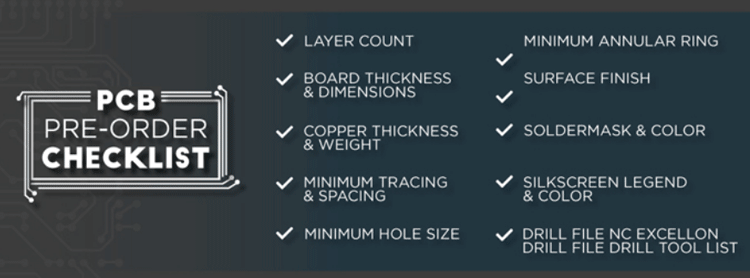PCB Quality Control – Things to validate during Design, Fabrication, Procurement and Inspection

Most modern electronic devices utilize one or more printed circuit boards. All the functions and performance of the electronic devices are dependent mainly on PCB. Therefore, it is logical to state that PCBs are the heart of electronic devices, and their quality and reliability directly affects the performance and lifetime of the electronic device.
Why do we need PCB Quality Checking?
Any flaw in a PCB quality will not only make the board unfit to use but will also waste the complete time and money spent in assembling and processing the board through the manufacturing line. This is why PCB Quality Check is performed on each board and the faulty board is removed before it reaches the assembly line. Normally most PCB Manufacturers themselves will have a PCB Quality Control team which manual examines every PCB before it reaches us the customers. But some small scall manufacturers do not do this and hence it is always important for us to check the quality of our PCB before we spend time and resources in assembling and processing the board. So this article we will learn how to ensure the quality of PCB from design to manufacturing.
There are three categories PCBs, which are, Class 1, Class 2, and Class 3. The different classes vary based on complexity, testing, and inspection method. It is evident that PCB performance will still be impacted if design and manufacturing were not correctly done, even with a correctly designed schematic, successive assembly, and debugging. Thus, it is paramount for you to implement quality control from PCB design to manufacturing. Quality control of PCBs should be effected in all the processes of its development, monitoring, and measurement during design, manufacturing, and inspection.
Quality Control during PCB Design
The design process is the most instrumental stage of developing a high-quality PCB. Therefore, adequate consideration should take place during this process.

The following three aspects should be considered to ensure quality in the PCB design process.
Validate the PCB design files
The design file provides the manufacturer with information about every layer of the PCB that will be applied during production. The files include the centroid file, bill of material (BOM), and GERBER file. Therefore, to guarantee quality in PCB design, the designer must check and verify the PCB design file, and all the corresponding approval processes that have to be fulfilled. The design process should match the specific requirements on the PCB design file.
PCB should be manufacturer friendly
You must ensure that all the technical requirements are met to guarantee the manufacturability of PCB. Decisions made during the design process impact the manufacturing and production stage.
Design for manufacturability involves organizing the PCB layout topology in a manner that addresses issues related to fabrication and assembly. Design for manufacturability optimizes the manufacturing process and guarantees high-quality production and compliance.
In that case, the technological requirement of the PCB must be communicated accurately, plainly, and justifiably.
Testing and normalization must be guaranteed.
Design for testability (DFT) takes place before production. DFT aids in detecting plausible testing issues before they become costly. It also entails strategies that eliminate manufacturing defects and stops defective products from being sent to the client. There are several checks that you should conduct, including structural style, routing, and dimension, to guarantee the testability and normalization of PCBs. Furthermore, it ensures that you adhere to the developed standardization requirement.

Quality Control in Fabrication
You must consider several factors to ensure a stable performance of the PCB. Firstly, the capacity of the PCB manufacturer must be guaranteed. The manufacturer must have qualified and experienced fabricators to ensure satisfactory manufacturing competence on the design project.

The manufacturer must have a broad range of capabilities to be able to deliver a variety of PCBs such as Aluminum PCB, Halogen-free PCB, and HDI PCB, among others if required for your application. Secondly, before manufacturing, you must continuously counter-check and confirm the design topology. The design process involves several trials and modifications, and therefore it is vital that the final design drawing version is carefully checked and confirmed that it conforms to requirements provided by the PCB manufacturer. Thirdly, ensure that the fabricators adhere to all the procedures of PCB manufacturing.
Quality Control in Component Procurement
Materials used in the manufacture of the PCB impact its quality and reliability. Therefore, optimization of component procurement needs reasonable quality control. Several quality control steps must be considered to limit potential problems. The steps include;
- BOM Validation: This process guarantees that the components in the bill of material align with the PCB design.
- MPN Verification: It allows for the purchase of correct components.
- Visual Inspection: It aids in ensuring that the components delivered match those ordered.
- Suppliers Verification: You should purchase from credible and reliable suppliers as it eliminates the use of counterfeit components that compromise the quality and reliability of the PCB.
Quality Control in Inspection
The PCB Quality Inspection ensures that the final product meets the requirement of the PCB design. The PCB is monitored and measured in strict adherence to developed standards. There are different standards for each country or industry. Therefore, the PCB must meet the standards of the country and industry in which it will be used. You should follow the following quality control steps, which include visual inspection, performance inspection, and technological inspection.
Visual inspection
In visual inspection, you should visually inspect several parameters of the PCB through the use of a ruler, magnifying glass, or Vernier caliper. The parameters to check and confirm as per the PCB design include board measurement, surface quality, positions of vias, pad plating quality, coating quality, and character quality.
Performance Inspection
Performance testing involves the general electrical performance of the PCB.
Connecting performance testing involves ensuring the implementation of PCB basic functionalities. You use a multimeter to check the connectivity of conductive patterns.
Insulating performance tests check the insulation of the PCB by inspecting the insulating resistor. The process guarantees the insulating performance of the PCB.
Technological Inspection
The technological inspection involves solderability and plating adhesion inspection. Several strategies are applied in general technological inspections to guarantee that the PCB operates optimally, effectively, reliably, and it’s of top quality. You should record and store the results of the inspections.








Comments